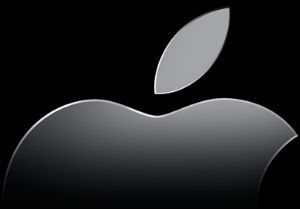The latest release of Apple’s pervasive iPad tablet, simply called ‘The New iPad’, has benefited from some technical upgrades that will enhance their use in an enterprise environment, according to analysts.
One of the key changes announced was the introduction of retina display, a term coined by Apple when it unveiled the iPhone 4. Although the display size itself hasn’t changed from previous iPad releases, 9.7" (diagonal) (246mm), it now boasts 2048 by 1536 pixels, for a total of over 3.1 million pixels. This pixel density means that at normal viewing distances it is not possible to see individual pixels, increasing the quality of the display.
Although this may appear to be an enhancement that is a little superficial when considering enterprise use, Gartner analyst Carolina Milanesi points out that given that iPads are often initially rolled out to Sales and Marketing functions, it may be considered a useful improvement.
"The screen and the introduction of retina display is certainly a great asset of the new iPad," said Milanesi. "Considering how many of the clients we are talking to use iPads to show brochures or other marketing materials, they could certainly benefit from it."
Milanesi also believes that Apple’s decision to include support for high-speed 4G LTE networks on iPads that include the mobile broadband feature will benefit US enterprises, where 4G networks have been rolled out already. "In the US, the addition of LTE might appeal to organisations whose users are particularly mobile and therefore are more reliant on cellular coverage and speed," she said.
However, this will be a useless feature for Irish enterprises as, despite trials, there are no commercially available LTE networks operational. 3 Ireland has had trials since 2010, with speeds of around 40Mb/s what has been termed "LTE ready" i-HSPA networks.
The new iPad will also boast a new A5X chip, which promises four times the performance of the Tegra 3 processor that powers many of the Android tablets in the market, thanks to the introduction of a new quad-core graphics processor.
Forrestor analyst Ted Schadler wrote in a blog that this will greatly aid the use of enterprise applications on the iPad, which are often resource hungry.
"With 11% of employees globally using tablets today, developers have powerful incentives to port business apps to touchscreen tablets. Already developers have built 200,000 apps for iPad. With a faster network connection and more power in the touchscreen interface, the new iPad can take on more business workloads: graphics, video, browser apps," he said.
"And some of that network speed and graphics power will be diverted to translate keyboard/mouse applications to even better virtual machine interfaces from Citrix, VMware, and others," he added.
"The list of software-as-a-service and software vendors delivering touchscreen business apps is also rapidly expanding and ready to take advantage of the faster network".
However, will these enhancements tempt those enterprises that already use iPads to upgrade to the latest model? Gartner’s Milanesi believes that this depends on whether or not enterprises operate bring your own device (BYOD) policies, or whether they have rolled them out internally.
"BYOD is responsible for the majority of iPads in the enterprise, and when it is down to the individual, many will want the new gadget. This is more because it is new, than because of any direct benefit to their productivity," said Milanesi.
"If the iPads have been rolled out by the organisation itself, it might be less common to see upgrades this soon from the iPad 2. However, you will certainly see upgrades form the iPad 1".
TechMarketView chairman Richard Holway, although slightly disappointed with the lack of surprises in CEO Tim Cook’s unveiling of the new product, believes that the iPad will continue to eat away at PC growth and is unlikely to face competition until the release of a Windows 8 tablet.
"Apple under Steve Jobs had the ability to surprise. But everything we heard this afternoon had been well trailed by ‘the pundits’ in advance. And there was no ‘and one more thing’," said Holway.
"This is very professional product evolution with Apple majoring on how the iPad is the device of the ‘post-PC’ era. Tim Cook showed a chart where the iPad in Q4 2011 outsold all PCs from each of the individual major suppliers," he added.
"Indeed, forecasters are now suggesting that by 2016 tablets will outsell all PCs (desktops and laptops). Long before then we should have a Windows 8 tablet, which just might give the first real competition to the iPad – particularly in the enterprise".
Mobile app company Antenna also picked up on the lack of a ‘surprise’ in Tim Cook’s launch, but suggests that this may be the new approach for Apple under his leadership. Mark Watson, EVP of technology and engineering at Antenna, argues that Apple may now simply look to remain ahead of the competition with every release, rather than revolutionise the industry.
"The features that Apple has chosen to install on the new iPad show that the platform has ‘normalised’-meaning that future releases will be iterative rather than revolutionary," said Watson.
"The fact that Apple didn’t save any really big surprises for later in the presentation may mean that Apple itself has normalised as a company, into an industry behemoth rather than a game changer," he added.
"They’ve done just enough to completely outflank their software and hardware competition, without doing anything technologically disruptive-either to itself or to the tablet market".
The new iPad will be available for purchase here from the 23 March.







Subscribers 0
Fans 0
Followers 0
Followers